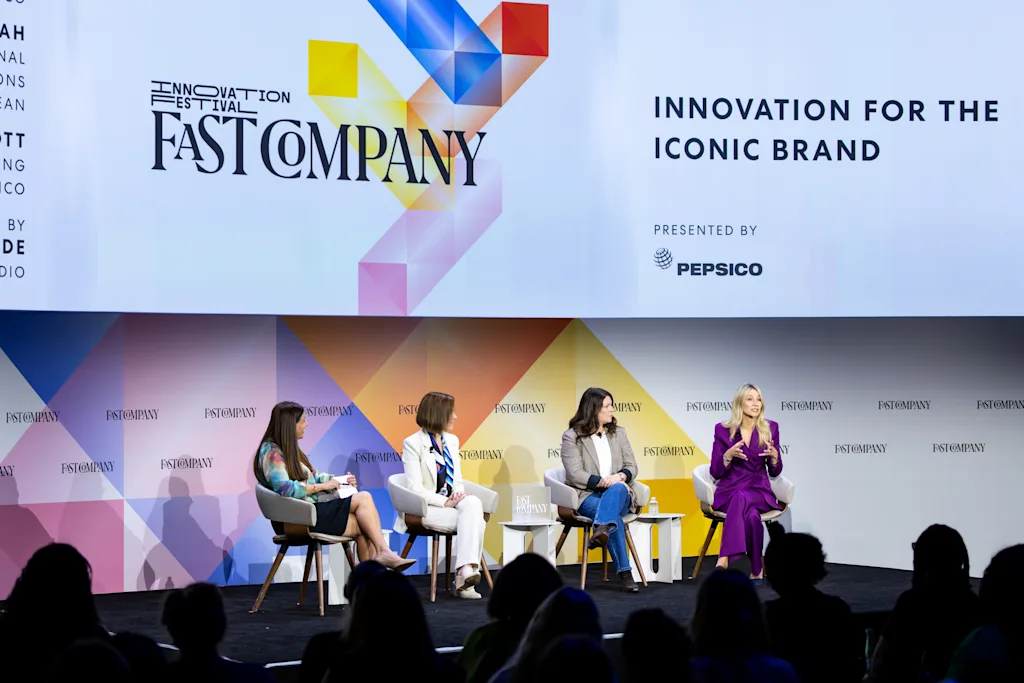Copyright Fast Company

Forging strong connections with customers is crucial to the success of today’s most popular consumer brands. But getting to that place is hard and maintaining those relationships while staying true to the brand requires effort and attention. The challenge for larger companies—with their scale and organizational complexity—is to have people who know and understand their customers, as well as the tools to act nimbly in the marketplace. PepsiCo sponsored a panel discussion at the recent Fast Company Innovation Festival that explored ways global brands can map visions of their future. Three leaders representing iconic brands shared their experiences of how they helped their companies connect with consumers and build strong product loyalties. Here are three key takeaways. (Some quotes have been edited for length and clarity; scroll to the bottom to watch the entire panel discussion.) 1. Get to the heart of what people need. Consumer preferences—shaped by cultural trends and conversations—are constantly evolving. In today’s food and beverage space, many of the young and health-conscious are looking for products that both taste good and provide established health benefits. Beverages that are high in protein are becoming especially popular. For some companies, responding to this demand may be as simple as picking a popular product and dialing up the protein. But for PepsiCo, it’s a process that starts with listening to what their researchers tell them about the latest science: that the benefits of protein are most impactful when intake is not only increased but consistent throughout the day. This also aligned with a consumer desire for more convenient access to protein, said Lauren Prescott, PepsiCo’s senior vice president of beverage portfolio marketing. And meeting that demand created an opportunity for product innovation. While most of us are hitting our recommended daily levels of protein, many people are concentrating the bulk of that intake during just one meal, such as a hearty dinner, Prescott explained. But for people looking to build functional muscle and decrease hunger, it’s far more efficient to spread protein intake out throughout the day and across multiple meals and snacks. Putting these insights into action, shortly after the panel PepsiCo announced the reformulation of its ready-to-drink beverage, Muscle Milk, which will include more protein and no artificial flavors or sweeteners. Now, customers can more easily meet their protein goals in convenient, effective, and tasty ways. “If we just chased ingredients, we’d just be talking about protein rather than talking about how to deliver the benefits with it,” Prescott said. “Consumers expect more from a brand like PepsiCo. That’s why we’re taking a much more thoughtful approach to providing a great taste experience and meeting their health needs.” 2. Engage with culture in an authentic way. Introduced in 1944 (as a way to carry ice), L.L. Bean’s Boat and Tote bags have built a devoted following for being both durable and fashionable. At last year’s Fashion Week, the company offered Boat and Tote owners the opportunity to have their bags monogrammed. L.L. Bean’s Amanda Hannah, head of brand engagement and external communications, said that fans turned out in force, with lines wrapping around the block. The Fashion Week event is an example of how companies can embrace cultural moments to make authentic connections with consumers. For L.L. Bean, that connection began a few years earlier, after the company started taking notice of Boat and Tote owner sharing Tik Tok clips of funny slogans—like “emotional baggage” and “fake heiress”—customized on their bags. The company wanted to act on this viral trend, Hannah explained, but without the “kill the cool” labels of corporate involvement. Bean teamed up with Gracie Wiener, founder of a popular Instagram account focused on totes personalized with messages, to add a new touch to the Boat and Tote. The limited-edition collection was launched at the Fashion Week pop-up event. “It’s really incredible to see what can happen when you’re paying attention, listening to customers, and finding those ways to naturally, authentically intersect with them in a culturally relevant way,” Hannah said. advertisement 3. Don’t be afraid to take big swings. To succeed, even the most established businesses need to take chances, panelists said. As Tara Glasgow, PepsiCo’s global chief science officer, explained, impactful innovation happens when teams “push [themselves] to really uncomfortable places.” In order to create new-to-the-world ideas, Glasgow said, “we need to act like leaders and disrupt ourselves. That’s when we’re at our best and most powerful.” This type of thinking came to life with the recent launch of Pepsi Prebiotic Cola. Here, Glasgow and her team, “imagined a different future for Pepsi, where [customers] can have their cake and eat it too.” Introduced in summer 2025, the company’s latest entry into the functional beverage market is made with ingredients that include fiber (for gut health), five grams of cane sugar, and zero artificial sweeteners all while delivering a signature Pepsi taste experience. “Being bold can be scary, especially for a company that’s been around for a long time,” Hannah said. But, she added, it’s vital for an established company to have the willingness to try something new and trust that their teams can pull it off. “Heritage, for us, is not a ceiling, but it is a compass. How do we use that to direct us in the right way?”



